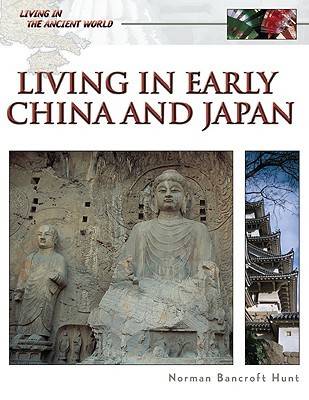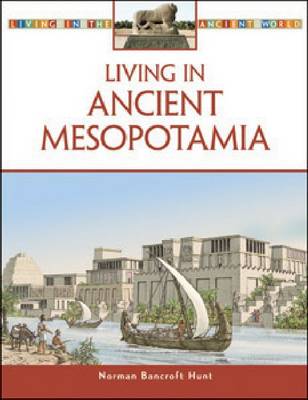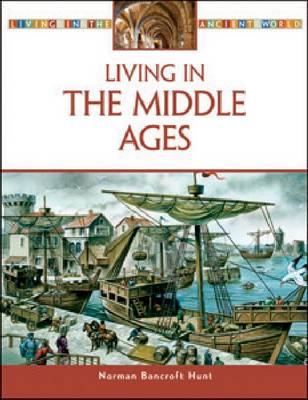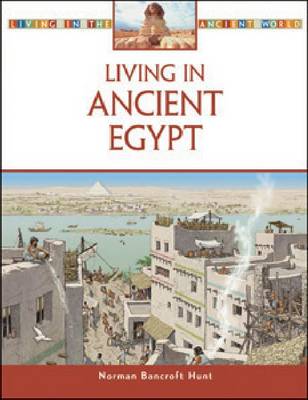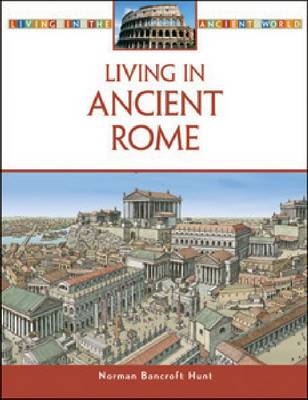Living in the Ancient World
6 total works
"Living in Early China and Japan" focuses primarily on an "ideal" period set in Tang China and medieval Japan (A.D. 600-1300). This book examines all the aspects of daily life across all strata of Chinese and Japanese society, from warlord to peasant farmer; from food to religious beliefs. Coverage includes farming, marriage, customs and rituals, and the development of Chinese society. Life in the Chinese "colonies" of the Taklimakan and Annam is also covered. This reference is a useful tool for students wanting to learn more about living in early China and Japan.
Living in Ancient Mesopotamia focuses primarily on two ""ideal"" periods set in about 3500 B.C (Sumer) and 1000 to 500 B.C. (Assyria and Babylonia). This book examines all the aspects of daily life across all strata of society, from the kings and priests to the slaves; from food to religious beliefs. Coverage includes the building of Southern Mesopotamia, the invention of writing, and the development of mathematics. Daily life in Babylon features a soldier's life, a farming society, and family structure. This reference is a useful tool for students wanting to learn more about life in ancient Mesopotamia. Chapters include: The Sumerians; Creating Order; and The Age of Super-States.
Living in the Middle Ages focuses primarily on two ""ideal"" periods set in 1100 and 1450, and generally in England. This book examines all the aspects of daily life across all strata of pre-Norman and feudal society, from the barons and bishops to the serfs; from food to religious beliefs. Coverage includes the feudal system, typical village, life in the castle, the Medieval church, and the growth of towns in the 15th century. This reference is a useful tool for students wanting to learn more about living in the Middle Ages. Chapters include: Working for the Overlord - the Peasant; Life in the Castle; Power to the Priest; Life in a Medieval Town.
Living in Ancient Egypt primarily focuses on an ""ideal"" period set some time in the later Pharaonic Era. This book examines all the aspects of daily life across all strata of Egyptian society, from the priestly caste to the lowliest peasant farmer and the slaves, from food to religious beliefs. Coverage includes the Egyptian farming cycle, the pharaoh's role, marriage and divorce, education and trade, and entertainment and games in Egyptian society. This reference is a useful tool for students wanting to learn more about living in ancient Egypt. Chapters include: Nile, Giver of Life; Egyptian Society and Government; and A Land Ruled by Gods.
Living in Ancient Rome primarily focuses on an ""ideal"" period set some time in the Imperium of Hadrian. This book examines all the aspects of daily life across all strata of Roman society, from the senatorial order to the plebs and slaves; from food to religious beliefs. Coverage includes the Roman family, The Roman Calendar, Roman goods and water supply, and the importance of games and theater in everyday life. This reference is a useful tool for students wanting to learn more about living in ancient Rome. Chapters include: The Roman Family at Home; A Working Life; Economy and Roman Law; and Religion and Relaxation.
Living in Ancient Greece primarily focuses on an ""ideal"" period set some time in the Classical period of Perikles. This book examines all the aspects of daily life across all strata of Greek society, from the aristoi to the Metics and slaves; from food to religious beliefs. Coverage includes major Greek heroes, the mystery of oracles, festivals and their origins, fishing and farming, what Greeks ate, the training of athletes, and the importance of drama in daily life. This reference is a useful tool for students wanting to learn more about living in ancient Greece. Chapters include: A Land of Gods and Heroes; Living off Land and Sea; The Greek Family and Society; Greek Society and Politics; and Science and Arts.
